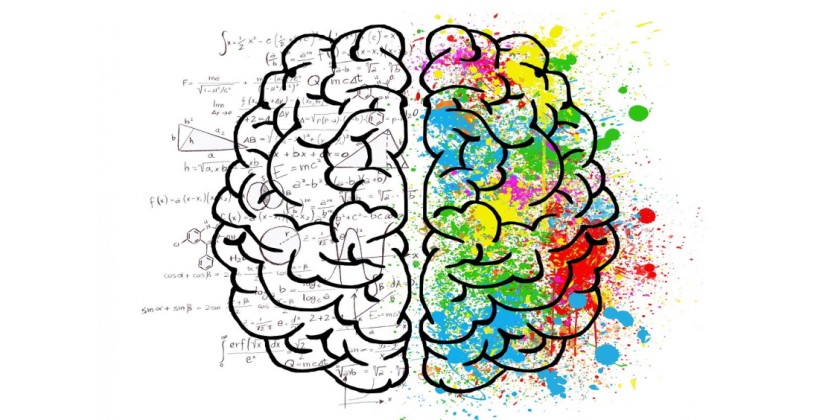Orders: +351 220 147 909
( call to national Portugal fixed network )
Email:[email protected]


What does DHA do for your brain?
Omega-3 fatty acids are important for healthy development and proper functioning of many systems in the body. One of the most studied omega-3 fatty acids, docosahexaenoic acid (DHA), is well known for its role in brain development - so much so that infant formulas are often fortified with DHA, and women are generally encouraged to take a supplement. DHA during pregnancy.
DHA is not just important for brain development during childhood; it is also necessary for the maintenance of healthy brain function throughout life. * To better understand why DHA is important for the brain, let's look at some basic aspects of brain anatomy and physiology.
Brain anatomy
As the most complex organ in the human body, the brain is a network of cells and tissues that uses chemical and electrical signals to create and maintain functions throughout the body. The human brain has been a mystery for a long time, although research is constantly revealing a new understanding of the structure and function of the brain's components.
Brain tissues are composed of neurons (nerve cells) and glial cells (cells that support the structure and function of neurons). There are also extensive networks of blood vessels, cerebrospinal fluid, and other tissues that provide support and protection. Neurons include four main parts: the cell body or soma, the axon that connects somas so they can communicate, dendrites that increase the soma's ability to receive signals from other cells, and the synapse that receives neurotransmitters from nearby neurons.
Axons are covered in a structure of fat and protein known as the myelin sheath. Myelin appears white against unmyelinated somas and dendrites, contributing to the names "white matter" and "grey matter" used to describe areas of the brain. White matter is dense with axons, while gray matter contains mostly somas and dendrites.
Both white and gray matter have a relatively high fat content, with white matter consisting of up to 70 percent of the lipid content. The myelin sheath, responsible for much of the increase in white matter fat content, allows for the rapid movement of electrical signals between neurons, acts as an insulator for electrical current, and helps signals move more efficiently throughout. the brain and nervous system.
Omega-3 fatty acids and the brain
Nutrition plays a significant role in brain development, both structurally and in human intelligence. Approximately 60 percent of a healthy brain is made up of fat, and omega-3 fatty acids, especially DHA, are concentrated in brain tissue. As the human diet began to include DHA-rich seafood, the gray matter in the cerebral cortex began to expand and brain size increased. This increase in size and gray matter matches the enhanced intelligence of modern humans.
Much of the accumulation of DHA in the brain occurs during fetal development, especially during the third trimester and up to 2 years of age, with some accumulation continuing throughout childhood. Thereafter, DHA levels are largely maintained, but not necessarily increased. Maintenance of brain DHA depends on food intake; however, the exact intake of DHA needed to maintain brain levels is not well established.
In adults, dietary intake of DHA appears to have a positive association with cognitive function and an inverse association with a variety of neurological conditions associated with mood and behavior. *3 More recent research suggests that DHA also plays a role in brain healing. * Oxidative stress, such as in brain damage, can trigger the conversion of DHA into a substance called protectins. As the name suggests, proteins act as protectors for neurons. Research also suggests that DHA may support inflammatory mechanisms by lowering NF-kB, a substance that helps regulate immunity and the inflammatory response. * 4
The DHA in supplementation comes primarily from fish, seafood/shellfish and algae sources. DHA can also be converted from alpha-linolenic acid (ALA), another omega-3 fatty acid found in many plants such as flax, chia and walnuts. However, the conversion rate of ALA to DHA is very low - recent studies suggest less than one percent - which is generally not considered sufficient to increase DHA levels. For this reason, DHA is sometimes called “conditionally essential” and it is recommended to consume sources of DHA and ALA rather than just ALA.
Most researchers recommend a minimum daily intake of 500 mg of DHA and EPA combined for healthy adults. To put this in perspective, one serving of cooked wild salmon provides approximately 1,220 mg of DHA and 350 mg of EPA, while 3 ounces of cooked shrimp provides 120 mg of DHA and EPA. For individuals who frequently eat fish and seafood, consuming enough DHA is not a challenge; whereas, for those who rarely eat fish, it may be more difficult.
Not getting enough fish in your diet? See the options.
Reference:
1 - Bradbury J. Docosahexaenoic acid (DHA): an ancient nutrient for the modern human brain. Nutrients 2011;3(5):529-554. doi:10.3390/nu3050529
2 - Lauritzen L, Brambilla P, Mazzocchi A, et al. DHA Effects in brain development and function. Nutrients 2016;8(1):6. doi:10.3390/nu8010006
3 - Horrocks L, Yeo Y. Health benefits of docosahexaenoic acid (DHA). Pharmacol Res 1999;40(3):211-225. doi:10.1006/phrs.1999.0495
4 - Lust C, Mountjoy M, Robinson L, et al. Sports-related concussions and subconcussive impacts in athletes: incidence, diagnosis, and the emerging role of EPA and DHA. Appl Physiol Nutr Metab 2020;45(8):886-892. doi:10.1139/apnm-2019-0555